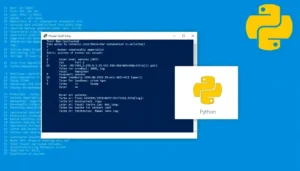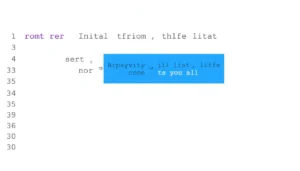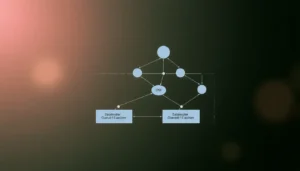EURUSD Rate Cuts: Powell’s Speech Sparks FX Shifts
- THE MAG POST

- Sep 1
- 5 min read

EURUSD rate cuts are reshaping the market narrative as Powell’s remarks ripple through FX desks and risk assets. The euro’s renewed bid comes amid fading dollar strength and growing bets that the Fed will ease policy soon, a dynamic that could redefine the second half of the year. As traders parse the Jackson Hole signal alongside upcoming PCE data, the path for EURUSD is increasingly framed by expectations of accommodation and the timing of it.
Fed-Fueled FX Shift: Parsing the EURUSD Response
Powell’s latest communications have unsettled the dollar and sharpened the focus on policy paths ahead. EURUSD rate cuts expectations surged as traders recalibrated bets around the pace and magnitude of upcoming easing, while the euro extended a cautious climb into the 1.17–1.18 zone. The move was not a one-off spike; it reflected a broader reassessment of risk, growth, and inflation that could redefine the second half of the year.
Powell's Jackson Hole Impact on FX Pricing
The speech delivered a clear signal: policy easing may be nearer than many had anticipated, yet the Fed remains mindful of price stability. Markets priced in a material probability of a September cut and priced the tempo of subsequent moves accordingly. In this environment, EURUSD rate cuts expectations have become a shorthand for shifting bets on cross-currency dynamics, with the euro benefiting as the dollar loses its bid on clearer easing prospects.
From a technical lens, the euro breached an important benchmark as the 50-day moving average briefly gave way to higher volatility and then steadied. This pattern suggests traders are repositioning, seeking entries around a possible retest of the next resistance while contemplating the durability of the rally if data softens or if the Fed delays any anticipated move. The balance between growth signals and inflation risk remains delicate, but the floor for euro gains has risen versus a softer dollar.
Rate-Cut Odds and Market Positioning
Futures portray a world where September rate cuts are increasingly priced in, with odds moving decisively from a minority view to a near-consensus stance. The slope of the curve implies traders anticipate a shallow but sustained easing cycle by year-end. In practical terms, rate cuts mean lower yields for dollar-denominated assets, which tends to depress the dollar’s allure and support non-dollar currencies like the euro.
Positioning reflects a broader reallocation: hedges against higher variance in growth and inflation, combined with a willingness to own rate-sensitive currencies when the narrative favors monetary accommodation. Importantly, the market’s read of policy credibility hinges on inflation trajectory and labor-market resilience, so the door remains open for surprises on either side as data flows continue to arrive.
PCE Data as the Next Milestone
The upcoming personal consumption expenditures data will test whether the inflation narrative supports a September move or if the data stream pushes the timetable back. The market is watching the core PCE index for evidence of cooling or persistence in price pressures, which will shape not only the Fed’s path but also how aggressively the EURUSD rate cuts bid persists.
Core PCE Trajectory
Analysts expect core PCE to come in around 2.9% year over year, a touch higher than the prior month. Such readings could validate a cautious stance toward aggressive easing, while a softer print could cement bets on a quicker transition to support for growth. In either case, the reaction inFX markets will hinge on the deviation from the consensus and the accompanying revision to growth expectations.
Traders are weighing not just the headline number but the underlying composition—services inflation versus goods, shelter costs, and wage dynamics. If core PCE cools as anticipated, EURUSD rate cuts bets could extend the rally toward the 1.18–1.1850 zone, testing resistance and inviting new risk-reward considerations for traders.
What If Data Misses
A softer-than-expected PCE print could reinforce the case for an earlier easing cycle, potentially pushing EURUSD higher as the dollar weakens on the prospect of looser policy. Conversely, a hotter print may prompt a reassessment, with the dollar regaining ground and the euro confronting the 1.16 support area as risk appetite adjusts to the new data reality.
Beyond the single release, the market will parse revisions to prior months and the Fed’s own inflation outlook. The interplay between PCE data and policy expectations will determine how durable the current EURUSD rate cuts narrative proves to be, and whether the next leg of the move emerges from a combination of data surprises and evolving central-bank commentary.
Technical Levels and Risk Scenarios
Technical setup and macro narratives are converging to shape the near-term path for EURUSD. Traders are scanning for clear triggers that might sustain or cap the ongoing adjustment, while risk managers weigh how much to lean into the current regime of policy accommodation.
50-Day Moving Average and Resistance
The breach of the 50-day moving average earlier in the week has become a focal point for momentum traders, while longer-dated resistance sits near the 1.1850 level. If the euro can consolidate above 1.18 on broadening participation, a broader move higher could unfold. However, a pullback toward 1.16 would reintroduce a risk-off tone and test the fundamentals behind the rally.
Volatility remains a natural feature as markets price in multiple potential paths for policy, inflation, and growth. The next few data prints will determine whether the current configuration is a sustainable upgrade in sentiment or a temporary shift in positioning amid evolving macro signals.
Dollar-Index Dynamics and Cross-Rates
With the dollar under renewed pressure on easing expectations, the dollar index could remain prone to swings driven by macro headlines and fiscal developments. Cross-rates beyond EURUSD, such as USD/JPY and USD/GBP, may exhibit amplified responses as traders test pockets of value where policy paths diverge most significantly.
Investors should be mindful that even favorable data for the euro can falter if risk sentiment falters or if the Fed signals a more gradual or data-dependent easing path. The EURUSD rate cuts narrative remains contingent on continuous alignment of inflation, growth, and policy signals across major economies.
Key Takeaways
Powell’s Jackson Hole remarks have elevated expectations for rate cuts and reshaped the FX landscape, lifting the euro as the dollar softens on the prospect of looser policy. The path ahead hinges on the upcoming PCE data and the Fed’s evolving inflation assessment, with EURUSD remaining sensitive to both data surprises and central-bank messaging. Traders should balance bullish positioning with risk controls as volatility persists and the market tests new price discovery levels.
Aspect | Key Takeaway |
Market reaction | EURUSD jumped about 1% and tested the 50-day MA, reflecting rate-cut expectations. |
Policy bets | Odds of a September cut rose toward 90%; pricing in ~50bps of easing by year-end. |
Key data | Core PCE expected around 2.9% YoY; softer readings could reinforce the euro rally. |
Resistance/Support | Next resistance near 1.1850; support around 1.16 if data or rhetoric shifts. |
Trade takeaway | EURUSD rate cuts narrative remains data-dependent and sensitive to Fed communication. |






















































Comments